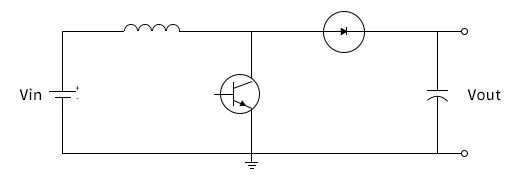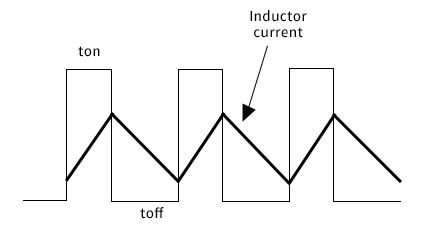
Boost circuit is a switching DC boost circuit, which can make the output voltage higher than the input voltage. It is a common circuit design method in electronic circuit design. This article will introduce the basic principle of boost and the design of circuit parameters.
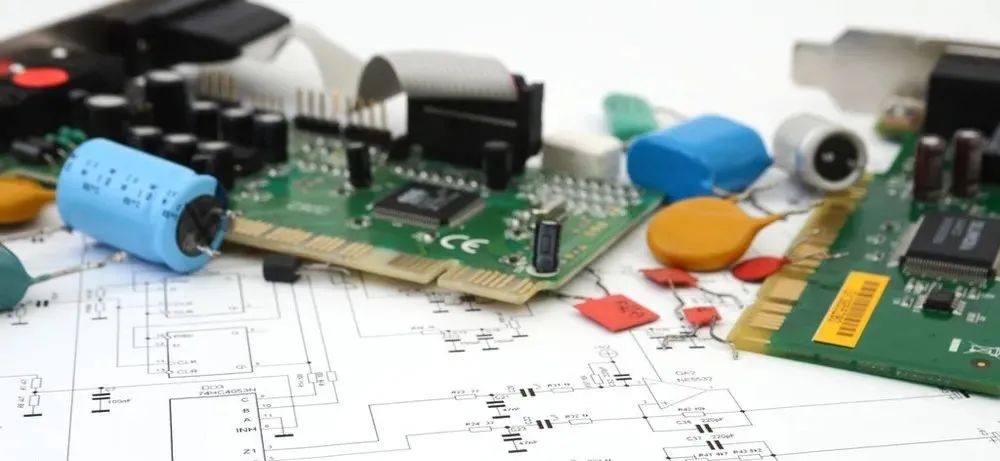
Capacitors block voltage change, pass high frequency, block low frequency, pass AC, block DC.;
Inductor blocks the change of current, passes low frequency, blocks high frequency, passes DC, blocks AC.;
figure 1 schematic diagram of boost switch boost circuit
Assuming that the switch (triode or MOS tube) has been off for a long time, all components are in ideal state, and the capacitor voltage is equal to the input voltage.This circuit will be explained in two parts: charging and discharging.
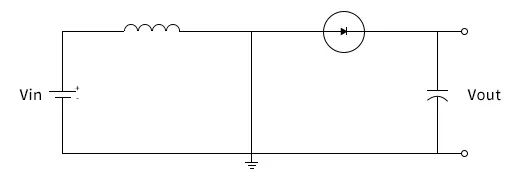
During charging, the switch is closed (triode is turned on), and the equivalent circuit is shown in Figure 2. The switch (triode) is replaced by a wire. At this time, the input voltage flows through the inductor. Prevent the diode capacitor from discharging to the ground. Because the input is direct current, the current on the inductor increases linearly at a certain ratio, which is related to the inductance. As the inductor current increases, some energy is stored in the inductor.
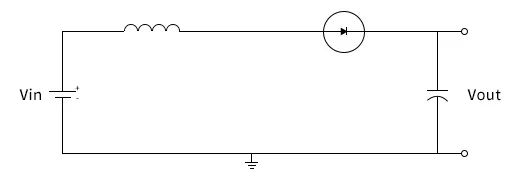
As shown in the figure, this is the equivalent circuit when the switch is turned off (triode is turned off). When the switch is turned off (the triode is turned off), the current flowing through the inductor will not immediately become 0, but will slowly change from the value at the end of charging to 0, due to the current holding characteristics of the inductor. The original circuit has been disconnected, so the inductor can only be discharged through the new circuit, that is, the inductor starts to charge the capacitor, and the voltage across the capacitor rises. At this time, the voltage is already higher than the input voltage, and the boost is finished.Speaking of it, the boosting process is an energy transfer process of an inductor. When charging, the inductor absorbs energy, and when discharging, the inductor releases energy. If the capacitance is large enough, a continuous current can be maintained at the output terminal during discharge. If this on-off process is repeated, a voltage higher than the input voltage can be obtained across the capacitor.
boostCircuit boosting process
Here are some supplements.:With low AA voltage, the bottleneck of power and efficiency of flyback boost circuit lies in the switching tube, rectifier tube, and other losses (including inductance).Inductors with too small magnets (unable to store proper energy) and too thin wire diameter (high pulse current will lead to large wire loss) cannot be used.Most rectifiers use Schottky, which is the same as everyone else. When the output voltage is 3.3V, the rectifier loss is about 10%.Switch, the key is here, put a large amount of enough into saturation, conduction voltage drop must be small, is the key to success. There is only one volt in total, and if the tubes are consumed too much, there will be no electricity coming out. Because the voltage drop of some tubes should not exceed 0.2--0.3V when the maximum current is selected, if only one tube can't do it, many tubes will be connected in parallel.What is the maximum current? Let's call it 1A if it's simple, but it's more than that. Due to the low efficiency, it will exceed 1.5A, which is the average value. It is 3A during half-cycle power supply, and the actual current waveform is 0 to 6A. Therefore, it is suggested that two pipes called 5A and 3A should be combined together to barely cope.None of the ready-made chips are integrated with the above-mentioned high-current tubes, so it is suggested that the earth circuit is enough to deal with the foreign circuit.These supplementary contents are knowledge that is not available in the textbook, but they can be compared and verified with the contents in the textbook.When the switch is turned on, the power supply forms a loop through the inductor-switch tube, and the current is converted into magnetic energy storage in the inductor; When the switch is turned off, the magnetic energy in the inductor is converted into electric energy, which is left negative and right positive at the inductor end. This voltage is superimposed on the positive end of the power supply, and a loop is formed through the diode-load to complete the boosting function. In this case, to improve the conversion efficiency, we should start from three aspects: reducing the impedance of the circuit when the switch tube is turned on as much as possible, so that the electric energy can be converted into magnetic energy as much as possible; Reduce the impedance of the load circuit as much as possible, so that the magnetic energy can be converted into electric energy as much as possible, and the loss of the circuit is the lowest; Reduce the consumption of the control circuit as much as possible, because the consumption of the control circuit is wasted in a sense for conversion and cannot be converted into energy on the load.BoostDesign of circuit parameters
For Boost circuit, the continuous mode of inductor current is very different from the discontinuous mode of inductor current. The output voltage of discontinuous mode is related to input voltage, inductance, load resistance, duty cycle and switching frequency. The output voltage of continuous mode only depends on the input voltage and duty cycle.
Selection of Output Filter Capacitor
In switching power supply, the function of output capacitor is to store energy and maintain a constant voltage.The capacitor selection of Boost circuit is mainly to control the output ripple within the specified range.For Boost circuit, the impedance of the capacitor and the output current determine the output voltage ripple.The impedance of the capacitor consists of three parts, namely the equivalent series inductance (ESL), the equivalent series resistance (ESR) and the capacitance value (C).In the inductor current continuous mode, the capacitance depends on the output current, the switching frequency and the expected output ripple. When the MOSFET is turned on, the output filter capacitor provides the whole load current.
In switching power supply, the function of inductor is to store energy.The function of inductor is to maintain a constant current, or to limit the change of current in inductor.In the Boost circuit, choosing an appropriate inductance is usually used to limit the ripple current flowing through it.The ripple current of the inductor is proportional to the input voltage and MOSFET turn-on time, and inversely proportional to the inductance. The inductance determines the working point of continuous mode and discontinuous mode.In addition to the inductance of the inductor, the maximum DC or peak current and the maximum working frequency should also be paid attention to when selecting the inductor.If the current of the inductor exceeds its rated current or the working frequency exceeds its maximum working frequency, it will lead to saturation and overheating of the inductor.
In the low power DC/DC change, PowerMOSFET is the most commonly used power switch. The cost of MOSFET is relatively low and the operating frequency is relatively high.MOSFET is selected in the design mainly considering its conduction loss and switching loss.The MOSFET is required to have a sufficiently low on-resistance RDS(ON) and a relatively low gate charge Qg.
This article is organized from the network.,Please contact us in time if copyright issues are involved.


